Bakhchysarai
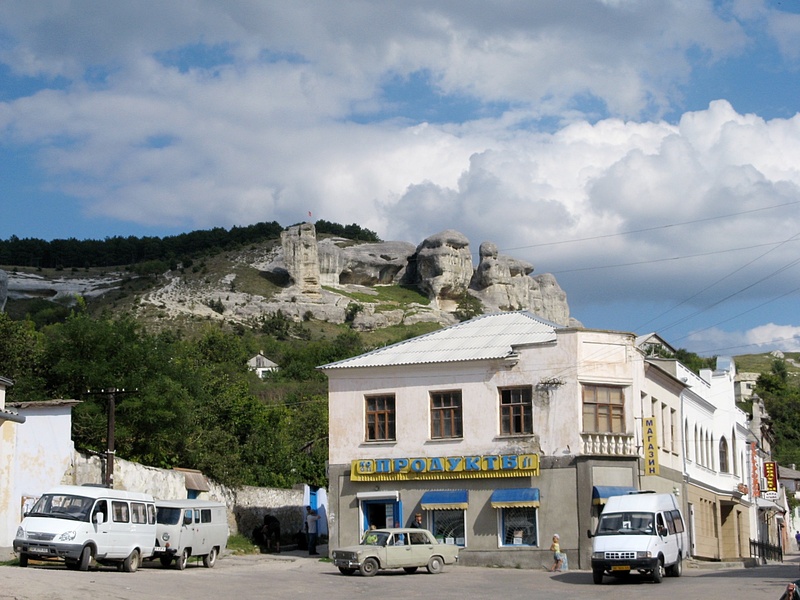
Bus stop, Bakhchysarai |
We took the elektryushka, the electric commuter train, out of Simferopol, through the lovely Crimean countryside. Keeping track of the many stations was tricky, so eventually I had to ask the old man next to me, in my broken Russian, "is this Bakhchysarai?" It wasn't. But consider the name for a moment. Bakhchysarai. It doesn't sound very Russian, does it? In fact, it sounds decidedly oriental. And it is.
We were going there to see the khan's palace, which is one of the main attractions of the little town. At the time (2006) it was not at all clear to me what sort of khan this was. Why would a ruler in Crimea, Ukraine title himself "khan"? One glance at the palace was enough to tell me that the khan was indeed every bit as oriental as his title would lead you to think. But what was he doing in Crimea? The answer turns out to be both important and interesting.

Entrance to the khan's palace |
A millennium ago, the center of Russian civilization was indisputably Kiev. Moscow at that time was a small town of no particular importance, while Kiev was the capital of a great realm stretching all the way to the Baltic, known as Kievan Rus' (basically, Kiev Russia). Kiev had taken on orthodox Christianity under the influence of nearby Constantinople, and even built a copy of the Hagia Sofia. It was all set for a future as the capital of a Russian Empire, but it was not to be.
In 1240 the Mongols stormed onto the scene and utterly destroyed Kiev, slaughtering the inhabitants. The great Saint Sophia cathedral fell into disrepair. The mongols continued further west, into Poland and Hungary, pillaging and burning as they went, then left as suddenly as they'd come. They did not leave Kiev, however. The Mongols established the Khanate of the Golden Horde, with a capital in Sarai Batu on the lower Volga, ruling all of what we now call Ukraine and vast territories further east. They exacted tribute from the principalities to the north, and kept them carefully subdued.
The Khanate adopted Islam as the state religion, and enjoyed a golden age lasting a century or so, before succession disputes weakened the realm. Into the vacuum left by its decline stepped the Grand Duchy of Lithuania and the Grand Duchy of Muscovy. The khanate broke up and was gradually pushed out of its former territories. One of the longest-lasting fragments was the Khanate of Crimea, with its capital at, you guessed it, Bakhchysarai. (Note the similarity between Sarai Batu and Bakhchysarai: "sarai" means "palace" in Tatar. By now the mongols were known as tatars.)
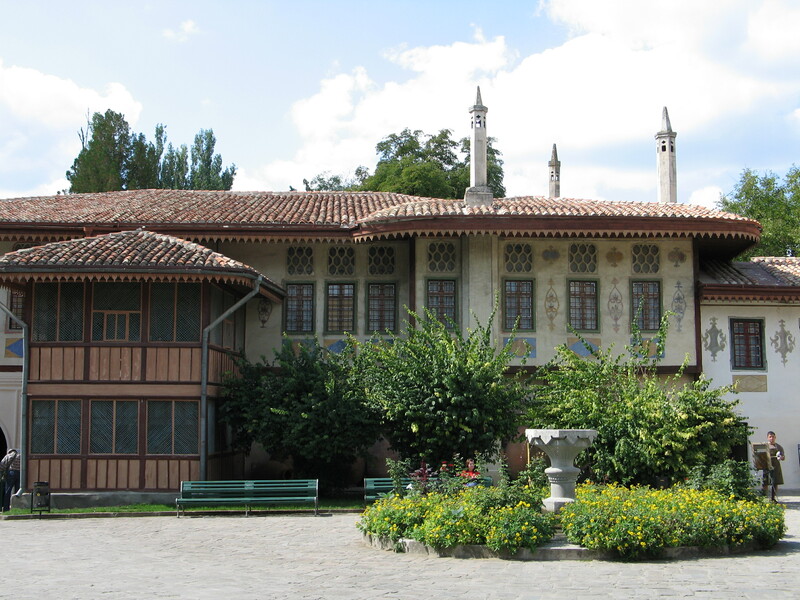
Palace living quarters |
The expanding state of Muscovy, by now known as Russia, picked off the khanates one by one, but the Crimean Khanate held out for centuries because of its location on the Crimean peninsula. Russia had no Black Sea fleet, and the khanate enjoyed the protection of its fellow moslems the Ottomans in Istanbul. The Russians found themselves unable to conquer the Crimea across the narrow and heavily fortified isthmus of Perekop.
The Crimean tatars therefore enjoyed relative safety, and made a living on raids of southern Ukraine. The sale of Russian slaves captured on these raids was a major source of income, and of course also a source of disputes with Russia. Eventually, under Catherine the Great in the late 18th century Russia conquered Crimea, ending the khanate forever. Legend has it that Catherine was so taken with the palace that she decided to preserve it. Whether that's true or not, most of the tatar heritage is gone, but the palace still stands untouched.
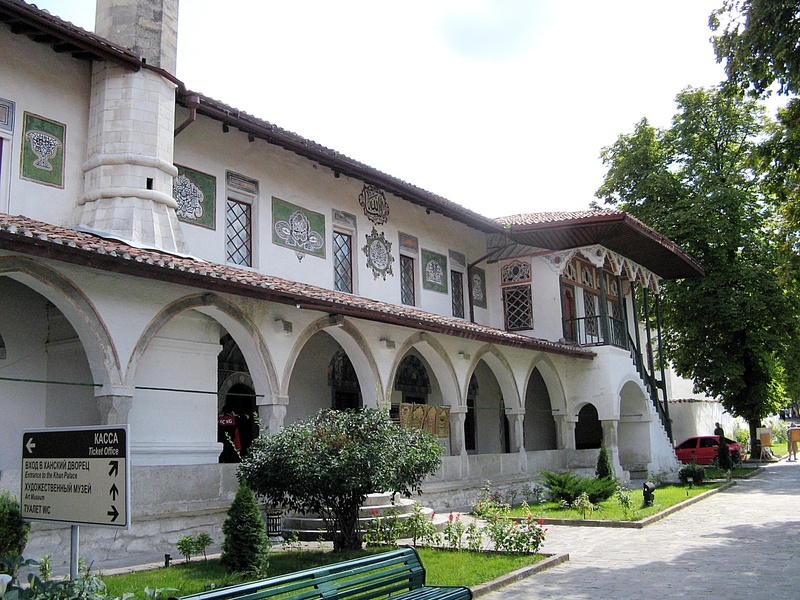
Mosque |
And it's a lovely building, looking more like the summer retreat of some eastern poet-prince than the headquarters of a fierce slave-raiding Mongol khan. There's a small mosque, with a tall, slender minaret rising out of it. There is, of course, a harem, with beautifully carved wooden screens shielding it from prying eyes. Comfortably carpeted living quarters for the khan, and a gate for ambassadors.
Inside the palace are also two famous fountains, the Golden Fountain and the Fountain of Tears. The latter is the subject of a very famous poem by Pushkin, which some claim is the reason the palace has not been destroyed. And it really is startling that the palace is so well preserved, offering a unique glimpse into a culture that is now almost entirely vanished.
For where did the tatars go? We will return to that in another blog post, because, incredible as it may seem, Bakhchysarai has more attractions to offer, no less interesting than the palace.
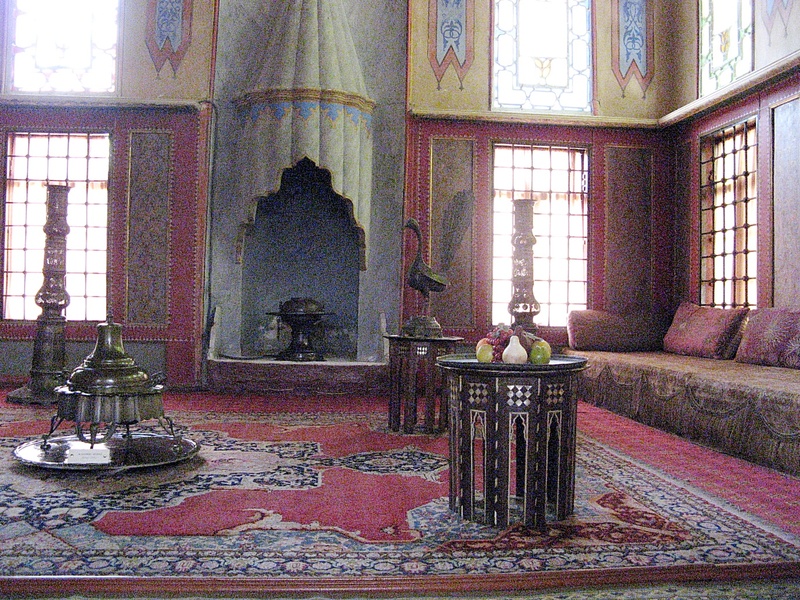
Living room |
Leaving the palace we found an airy restaurant on a kind of platform above Bakhchysarai, serving tatar cuisine and run by local tatars. As we sat there staring at the sleepy town, the peace only disturbed by a casette deck, we would never have guessed that the Crimea would years later become the flashpoint of a major international crisis. Now that it's happened, however, it's not so difficult to see why.
Why would Russia care what happens in neighbouring countries? Places like Georgia, the Baltics, or Ukraine? One thing is that all of these countries were once, and not so long ago, important parts of the Russian Empire. Ukraine, however, and particularly Kiev, is special. As described above, it's the cradle of Russian civilization, or, as Robert Massie put it, "mother of all Russian cities".
To Vladimir Putin, who described the collapse of the Soviet Union as "the greatest geopolitical catastrophe of the 20th century", Ukraine is obviously the most important by far of all the ex-Soviet republics. That Russia should want to retain influence over Ukraine is no surprise at all to anyone familiar with Russian history.
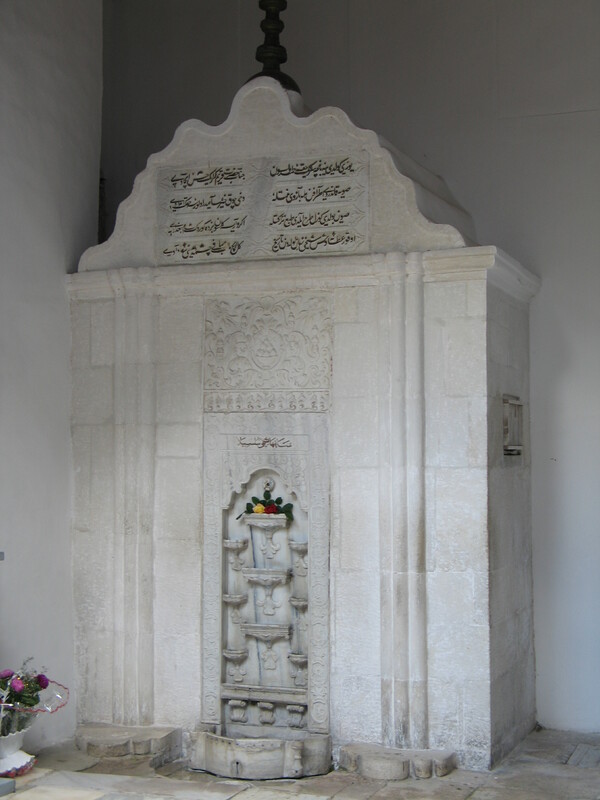
The Fountain of Tears |
Similar posts
The deserted cave city of Chufut-Kale
From the khan's palace in Bakhchysarai we took a marshrutka a couple of kilometers up the valley, to the next sight
Read | 2014-03-16 13:24
Ukraine: some travel advice
Parvez Khan posted a long list of questions in the comments, and I thought I'd take a separate blog entry to reply to them, since he had quite a few questions
Read | 2008-01-01 22:39
Comments
Robert Barta - 2014-03-12 02:03:05
I actually was here for some tech news, but instead was fascinated by this historic account.
Unsolicited content at its best :-)
\rho